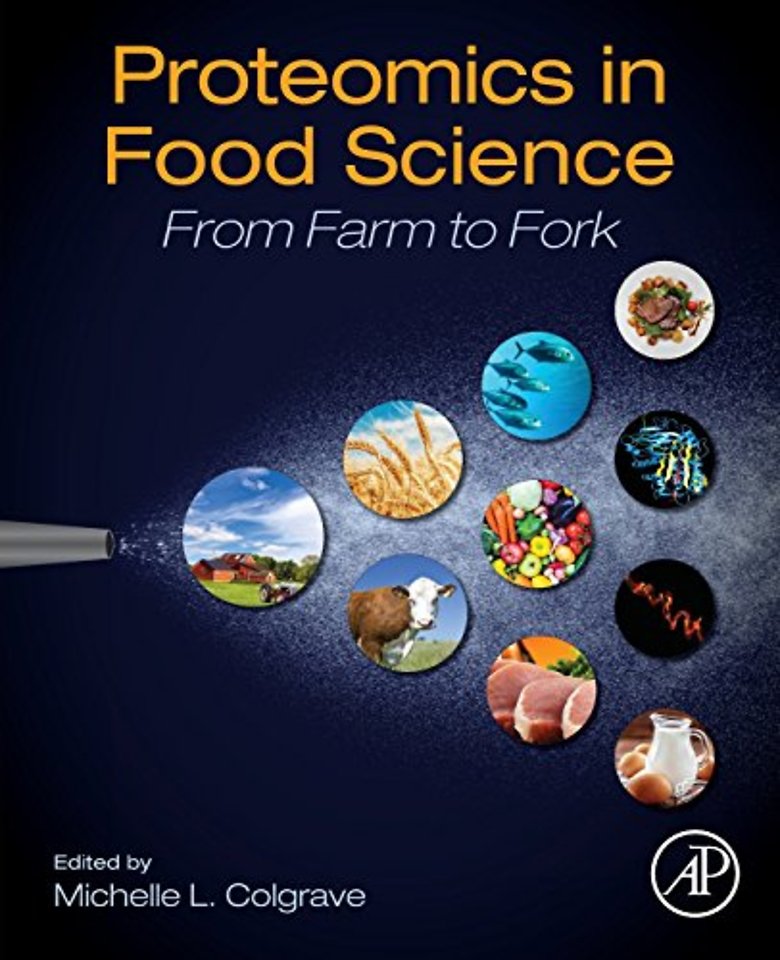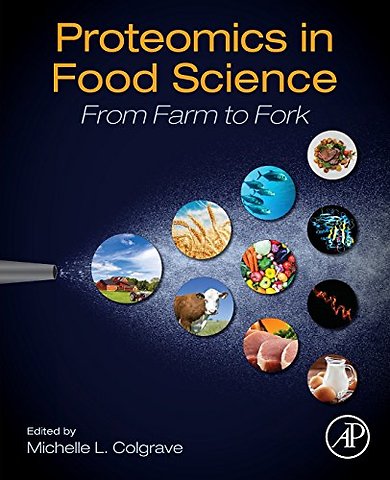<p>Section 1. Application to Plants — Cereals, Nuts, Pulses, and Fruits<br>1. Postharvest Proteomics of Perishables<br>2. Proteomics of Rice—Our Most Valuable Food Crop<br>3. Proteomics as a Tool to Understand Maize Biology and to Improve Maize Crop<br>4. Proteomics of Wheat Flour<br>5. Barley Grain Proteomics<br>6. Proteomics of Soybean Plants<br>7. Proteomics of Hazelnut (Corylus avellana)<br>8. Proteomic as a Tool to Study Fruit Ripening</p> <p>Section 2. Application to Farm Animals – Meats, Dairy, and Eggs<br>9. From Farm to Fork: Proteomics in Farm Animal Care and Food Production<br>10. Proteomics of Color in Fresh Muscle Foods<br>11. Proteomic Investigations of Beef Tenderness<br>12. Protein Modifications in Cooked Pork Products<br>13. Poultry and Rabbit Meat Proteomics<br>14. Using Peptidomics to Determine the Authenticity of Processed Meat<br>15. Proteomic Characterization of Nonenzymatic Modifications Induced in Bovine Milk Following Thermal Treatments<br>16. Proteomics of Egg White</p> <p>Section 3. Application to Aquaculture<br>17. Proteomics in Aquaculture: Quality and Safety<br>18. Proteomics to Assess Fish Quality and Bioactivity<br>19. Proteomic Identification of Commercial Fish Species<br>20. Food Authentication of Seafood Species<br>21. Proteomic Analysis of Disease in Sydney Rock Oysters</p> <p>Section 4. Processed Foods<br>22. Proteomics of Fermented Milk Products<br>23. Proteomic Analysis of Beer<br>24. Proteomics of Grapevines and Wines</p> <p>Section 5. Food Spoilage, Pathogenic Organisms and Allergens<br>25. Proteomics of Food Spoilage Pathogens<br>26. Biotyping Meets Proteomics: Mass Spectrometry-Based Approaches for Characterization of Microorganisms<br>27. Proteomics Analyses Applied to the Human Foodborne Bacterial Pathogen Campylobacter spp.<br>28. Proteomic Approaches for Allergen Analysis in Crop Plants<br>29. Detection of Microbial Toxins by -Omics Methods: A Growing Role of Proteomics</p>

